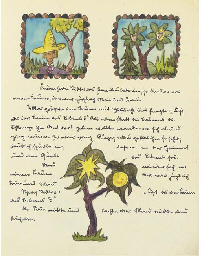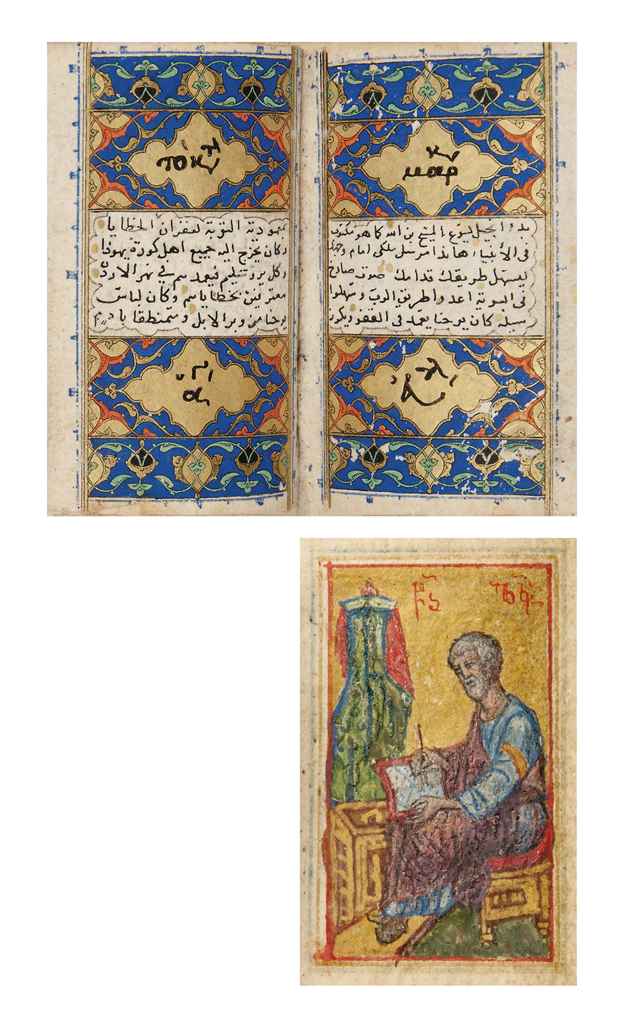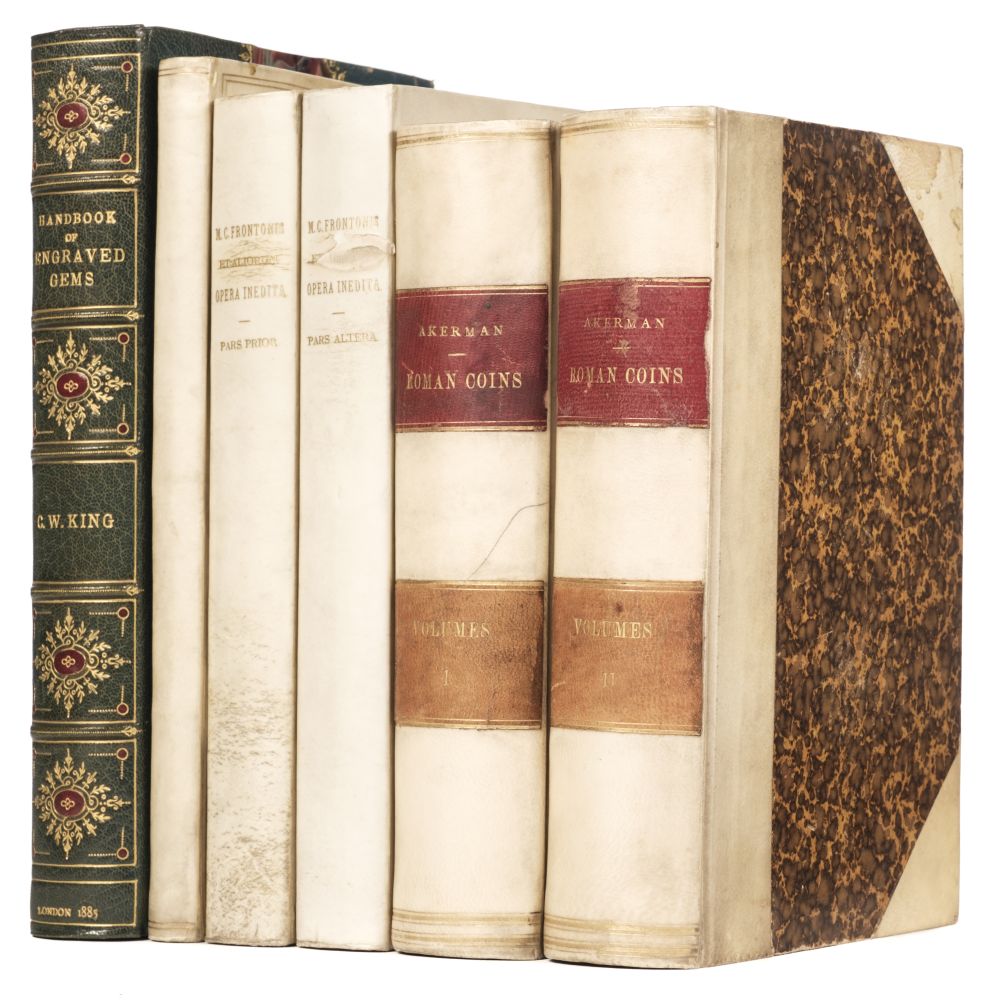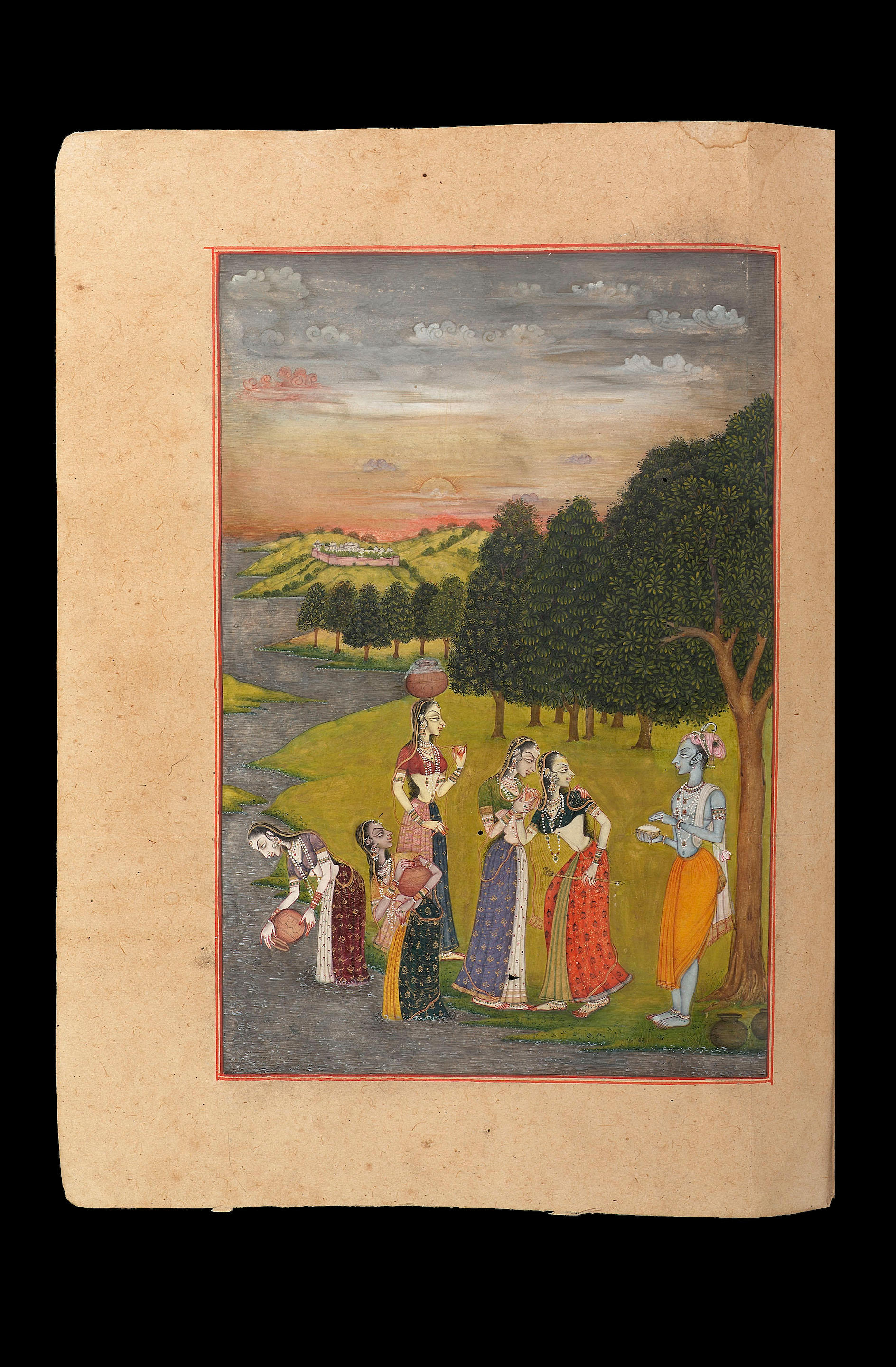The earliest known milah manuscript by the noted scribe-artist Jacob Sofer of Berlin.
The creator of this exquisite illustrated Hebrew book of circumcision prayers was Jacob Sofer ben Judah Leib of Berlin, a talented, prolific scribe of the Hamburg-Altona school of Hebrew manuscript production. His earliest works date from 1717, and he was active until at least 1741; over thirty-five books penned by him are still extant. The present volume is the very first milah book that Jacob wrote and one of the earliest Hebrew books to have been created during the renaissance of decorated Hebrew manuscript production that began in the second decade of the eighteenth century. Jacob embellished this miniature manuscript with four illustrations and illuminated the opening letters of key prayers with shell gold. The elegant penmanship exhibited by him in this work has yielded a beautiful, eminently legible book that constitutes a tour-de-force of the Hebrew scribal arts. As indicated in the dedicatory inscription on the title page, this book was written for Joseph Reuben Furst, a noted Jewish communal leader and philanthropist in Hamburg.
IllustrationsTitle page: Architecturally framed, with Moses holding his rod and the Tablets of the Law at right and Aaron dressed in the garb of a High Priest holding a censer at left. In a cartouche below, a man holding a scale represents the Zodiac sign of Libra.
Fol. 10v: In a scene set in an elaborate interior space, a man presents the infant to the sandak, who will hold the child during the circumcision.
Fol. 11v: Three men dressed in extravagant clothing prepare to recite the blessings over the wine. The man at left holds an open book and a large goblet; the man at center, garbed in a tallit, holds the infant; and the man at right holds a large lit taper.
Fol. 13r: The celebrants sit around a table in a well-appointed interior and enjoy a festive meal after the circumcision.
Provenance1. Joseph Reuben Furst (title page)2. Moses Eleazar, gifted to his son (initial parchment flyleaf)3. Collection of the Chief Rabbi of Hanover (initial paper flyleaf). An accompanying letter indicates that the manuscript then descended in the family to Audrey Kearns, grandmother of the present owner.
Physical Description26 folios (4 1/4 x 2 1/2 in.; 108 x 63 mm) on parchment; written in very fine Ashkenazic square (text body) and semi-cursive (rubrics and secondary texts) scripts in brown ink; text body vocalized. Full-page illustrated title and three pen-and-ink illustrations within the text. Slight wear from use with minor staining throughout. Contemporary gilt-tooled red morocco, with minor chips to corners; edges gilt; contemporary paper flyleaves and pastedowns. Housed in a modern beige cloth-covered folding case. Accompanied by a letter recording the gift of this manuscript to the present owner’s grandmother.
LiteratureIris Fishof, Jüdische Buchmalerei in Hamburg und Altona: Zur Geschichte der Illumination hebräischer Handschriften im 18. Jahrhundert, trans. Dina Herz and Smadar Rahveh-Klemke, ed. Andreas Brämer (Hamburg: H. Christians, 1999), 192-195, 342-344.
Emile G. L. Schrijver, “‘Be’ôtiyyôt Amsterdam’: Eighteenth-century Hebrew manuscript production in Central Europe: the case of Jacob ben Judah Leib Shamas,” Quærendo 20,1 (1990): 24-62.
Ursula and Kurt Schubert, Jüdische Buchkunst, vol. 2 (Graz, Austria: Akademische Druck- u. Verlagsanstalt, 1992), 117-119.
The earliest known milah manuscript by the noted scribe-artist Jacob Sofer of Berlin.
The creator of this exquisite illustrated Hebrew book of circumcision prayers was Jacob Sofer ben Judah Leib of Berlin, a talented, prolific scribe of the Hamburg-Altona school of Hebrew manuscript production. His earliest works date from 1717, and he was active until at least 1741; over thirty-five books penned by him are still extant. The present volume is the very first milah book that Jacob wrote and one of the earliest Hebrew books to have been created during the renaissance of decorated Hebrew manuscript production that began in the second decade of the eighteenth century. Jacob embellished this miniature manuscript with four illustrations and illuminated the opening letters of key prayers with shell gold. The elegant penmanship exhibited by him in this work has yielded a beautiful, eminently legible book that constitutes a tour-de-force of the Hebrew scribal arts. As indicated in the dedicatory inscription on the title page, this book was written for Joseph Reuben Furst, a noted Jewish communal leader and philanthropist in Hamburg.
IllustrationsTitle page: Architecturally framed, with Moses holding his rod and the Tablets of the Law at right and Aaron dressed in the garb of a High Priest holding a censer at left. In a cartouche below, a man holding a scale represents the Zodiac sign of Libra.
Fol. 10v: In a scene set in an elaborate interior space, a man presents the infant to the sandak, who will hold the child during the circumcision.
Fol. 11v: Three men dressed in extravagant clothing prepare to recite the blessings over the wine. The man at left holds an open book and a large goblet; the man at center, garbed in a tallit, holds the infant; and the man at right holds a large lit taper.
Fol. 13r: The celebrants sit around a table in a well-appointed interior and enjoy a festive meal after the circumcision.
Provenance1. Joseph Reuben Furst (title page)2. Moses Eleazar, gifted to his son (initial parchment flyleaf)3. Collection of the Chief Rabbi of Hanover (initial paper flyleaf). An accompanying letter indicates that the manuscript then descended in the family to Audrey Kearns, grandmother of the present owner.
Physical Description26 folios (4 1/4 x 2 1/2 in.; 108 x 63 mm) on parchment; written in very fine Ashkenazic square (text body) and semi-cursive (rubrics and secondary texts) scripts in brown ink; text body vocalized. Full-page illustrated title and three pen-and-ink illustrations within the text. Slight wear from use with minor staining throughout. Contemporary gilt-tooled red morocco, with minor chips to corners; edges gilt; contemporary paper flyleaves and pastedowns. Housed in a modern beige cloth-covered folding case. Accompanied by a letter recording the gift of this manuscript to the present owner’s grandmother.
LiteratureIris Fishof, Jüdische Buchmalerei in Hamburg und Altona: Zur Geschichte der Illumination hebräischer Handschriften im 18. Jahrhundert, trans. Dina Herz and Smadar Rahveh-Klemke, ed. Andreas Brämer (Hamburg: H. Christians, 1999), 192-195, 342-344.
Emile G. L. Schrijver, “‘Be’ôtiyyôt Amsterdam’: Eighteenth-century Hebrew manuscript production in Central Europe: the case of Jacob ben Judah Leib Shamas,” Quærendo 20,1 (1990): 24-62.
Ursula and Kurt Schubert, Jüdische Buchkunst, vol. 2 (Graz, Austria: Akademische Druck- u. Verlagsanstalt, 1992), 117-119.
.jpg)





.jpg)



.jpg)


.jpg)
.jpg)
Testen Sie LotSearch und seine Premium-Features 7 Tage - ohne Kosten!
Lassen Sie sich automatisch über neue Objekte in kommenden Auktionen benachrichtigen.
Suchauftrag anlegen